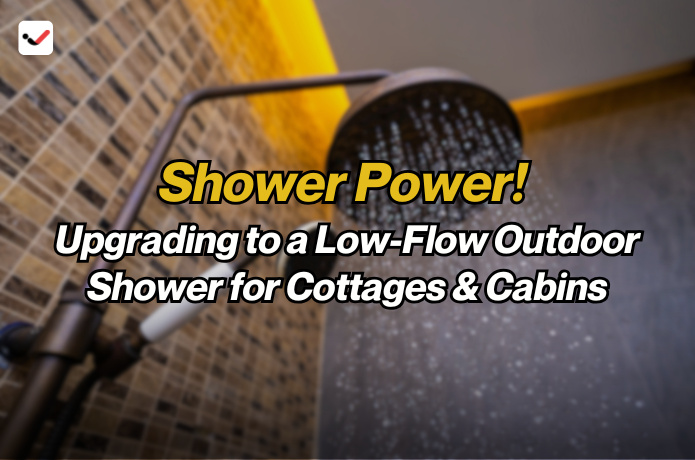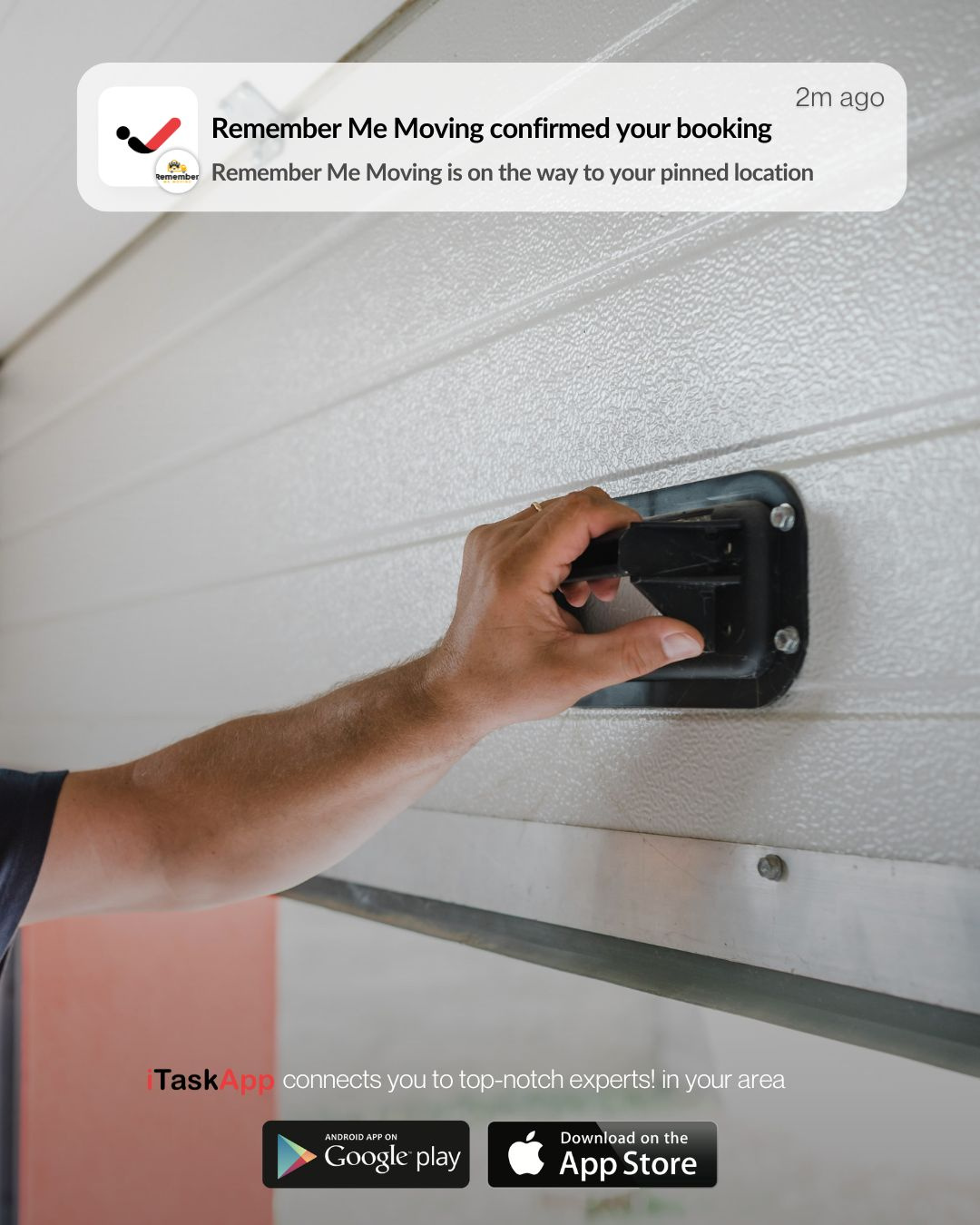Shower Power! Upgrading to a Low-Flow Outdoor Shower for Cottages & Cabins
Shower Power! Upgrading to a Low-Flow Outdoor Shower for Cottages & Cabins

There’s something refreshing and peaceful about an outdoor shower. For cottage and cabin owners, it offers a relaxing way to rinse off after a swim in the lake, a long hike through the woods, or a hot summer day. But a regular outdoor shower can waste a lot of water if not managed properly. That’s where a low-flow outdoor shower comes in. This eco-friendly shower solution helps you stay clean while reducing water waste and lowering energy bills.
Low-flow outdoor showers are becoming more popular with cottage owners, DIYers, and those living off the grid. These showers are simple to install, easy to maintain, and better for the environment. Whether your cabin is a weekend getaway or a year-round retreat, upgrading to a water-saving outdoor shower is a smart step toward sustainable living. This guide will walk you through the benefits, setup tips, and maintenance needs of low-flow outdoor showers.
Why Choose a Low-Flow Outdoor Shower?
1. Save Water
One of the biggest benefits of a low-flow outdoor shower is the amount of water it saves. Traditional showerheads can use 5 to 8 gallons of water per minute. In contrast, a low-flow showerhead uses only about 1.5 to 2.0 gallons per minute. Over time, this can save thousands of gallons of water, especially during summer months when outdoor showers are used often.
2. Lower Energy Bills
Using less hot water also means using less energy to heat it. For cottages and cabins with electric or propane heaters, this can lead to noticeable savings. An energy-efficient outdoor shower doesn’t just help the environment—it also helps keep your costs down.
3. Support Off-Grid Living
For off-grid cabins that rely on collected rainwater or water from a nearby lake or well, every gallon counts. A water-saving outdoor shower makes the most of limited water supplies. This is especially helpful during dry seasons or in areas with water restrictions.
4. Eco-Friendly Comfort
Many people worry that a low-flow shower might feel weak or unsatisfying. But modern low-flow showerheads use smart designs that keep the water pressure strong while reducing the flow. You get a refreshing rinse that feels great and still supports water conservation.
5. Reduce Your Environmental Footprint
Installing a low-flow outdoor shower is one small change that leads to big results over time. By using less water and energy, you're contributing to a healthier environment and helping reduce your cabin’s impact on local ecosystems.
Planning Your Outdoor Shower Setup
Before installing your shower, it’s important to plan carefully. Here are the key things to think about:
1. Choose the Right Location
Pick a spot that gets some sun (to help dry things out) and provides privacy. Common places include the back of the cottage, next to a deck, or tucked away in the trees. If your shower is close to your water heater or plumbing system, installation will be easier.
2. Drainage Matters
Make sure the area has good drainage. You don’t want water to pool around your cottage or create mud. A gravel base or slatted wooden floor helps water drain quickly. If your shower is near a garden, you can even reuse the greywater to water your plants—just make sure to use biodegradable soap.
3. Pick the Right Materials
Because this shower is outdoors, you need materials that can stand up to rain, sun, and changing temperatures. Cedar, teak, or pressure-treated wood are great choices for the frame. Use rust-resistant plumbing fixtures like stainless steel or brass. Plastic piping can also work well and is easier to handle for DIY setups.
4. Use a Good Showerhead
Look for a low-flow showerhead that has a flow rate of 2.0 gallons per minute or less. Some are labeled with the WaterSense logo, which means they meet EPA standards for efficiency and performance. You can find rain-style heads, handheld options, or adjustable settings that let you change the water pattern.
5. Plan for Cold Weather
If your cabin is in a place that gets cold in the fall or winter, you’ll need to winterize your shower. That means draining the pipes and shutting off the water before freezing temperatures arrive. You might also want to install a shutoff valve indoors to make this easier.
How to Install a Low-Flow Outdoor Shower
Installing a low-flow shower doesn’t have to be complicated. Here’s a simple step-by-step overview for a basic setup:
Step 1: Build a Base or Platform
Create a level surface with gravel, flat stones, or wooden decking. This will keep your feet clean and help with drainage.
Step 2: Install a Post or Wall
Use a sturdy post or wall to mount your showerhead and controls. If attaching to the side of a building, use waterproof materials and seal any pipe holes to prevent leaks.
Step 3: Connect to the Water Supply
If you have pressurized plumbing, run a pipe from your main water line or hot water heater. Use PEX or copper tubing and make sure to include a shutoff valve. For a simpler setup, connect your shower to a garden hose or rain barrel. Solar-heated tanks can also provide warm water off-grid.
Step 4: Mount the Low-Flow Showerhead
Install the showerhead and valve or faucet. Use plumber’s tape to avoid leaks and check all fittings for tightness.
Step 5: Test the Shower
Turn the water on and check for leaks. Adjust the height and angle of the showerhead as needed. Add hooks for towels or bathing items if desired.
DIY Options for Off-Grid Cabins
Even without running water, you can still enjoy an outdoor shower. Some common off-grid setups include:
Gravity-fed systems: Use a raised tank or bucket to feed water into your showerhead.
Solar showers: Heat water in black bags or coils of black hose using the sun’s energy.
Portable propane heaters: Attach to a water source and heat water as it flows through a compact unit.
These systems work especially well with low-flow showerheads, as they stretch your limited water supply further.
Maintenance Tips
Outdoor showers need regular care to keep working well. Here’s how to keep things running smoothly:
Clean the showerhead regularly. Mineral buildup from hard water can block the spray holes. Soak the head in vinegar every few months.
Check for leaks. Look over all connections, pipes, and hoses to make sure nothing is dripping.
Keep the area tidy. Rinse away mud or soap scum and sweep the floor or base often.
Protect in winter. Always shut off the water supply and drain the pipes before freezing weather. Store any removable parts indoors.
Extra Features to Consider
You can make your outdoor shower more enjoyable by adding small extras:
Hooks and shelves for towels, soap, and shampoo
Foot rinse faucet for quick cleanups
Mirror and bench to make it easier to get ready outside
Privacy screens made from bamboo, wood slats, or canvas
These touches add comfort and make the shower area more useful for you and your guests.
Environmental Impact and Long-Term Benefits
A low-flow outdoor shower is one of the simplest ways to make your cabin or cottage more eco-friendly. Reducing water waste protects nearby lakes, rivers, and wells. Using less energy lowers your carbon footprint. Plus, when your water use drops, your monthly costs can go down too.
Over time, the savings from reduced water and energy use can pay for the cost of installation. And if you ever decide to sell your cabin, a smart green upgrade like this can increase its appeal to future buyers.
Living at a cottage or cabin is about enjoying nature, relaxing, and being more mindful of your surroundings. A low-flow outdoor shower fits perfectly with this way of life. It helps you enjoy a little luxury while staying connected to the environment. You get the same great experience while using less water and energy.
Whether you’re installing your first outdoor shower or upgrading an old one, switching to a low-flow model is a smart and simple choice. It’s good for your wallet, good for your cabin, and good for the planet. So take the plunge and enjoy the fresh, clean feeling of a water-saving outdoor shower today!

